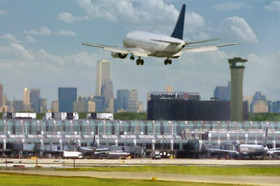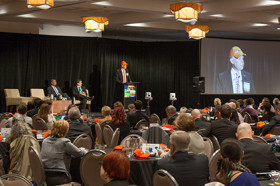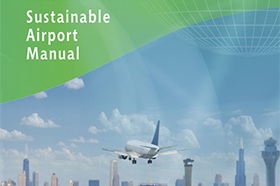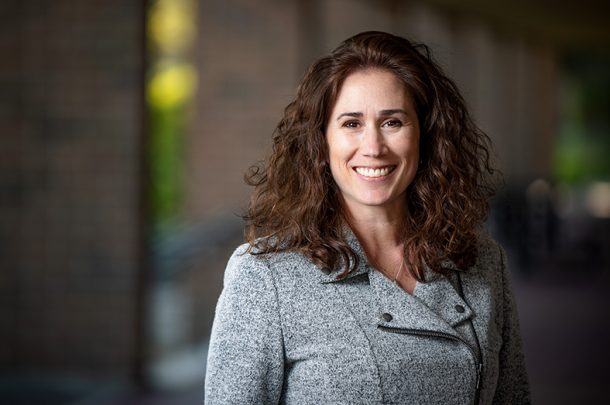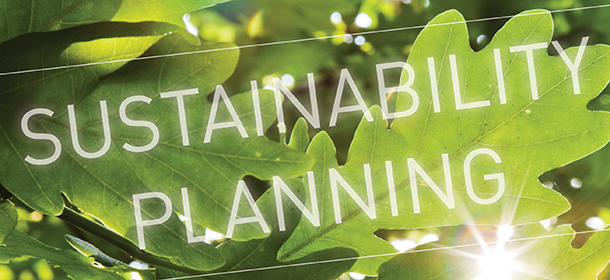
Primera is at the forefront of sustainable design and the incorporation of sustainable technologies. Our ever-expanding portfolio of LEED certified project experience enhances our ability to provide the best solutions that have a positive impact on the environment and the people that it affects. While our experience with sustainability planning extends from municipalities to healthcare campuses, one of our major accomplishments is the development of a sustainability guidance and rating system geared toward airport environments.
In recent years, there has been a push to develop sustainability standards that apply to civil infrastructure projects, similar to the way the US Green Building Council’s Leadership in Energy and Environmental Design (LEED) program evaluates and certifies buildings. Current standards include the Institute for Sustainable Infrastructure (ISI) EnvisionTM rating system and the lesser known Greenroads® rating system developed by the University of Washington and several consulting firms, both of which were introduced in 2011. Even state agencies have developed their own sustainability certification programs, such as the Illinois State Toll Highway Authority’s (ISTHA) Illinois-Livable and Sustainable Transportation (I-LAST) developed in 2010 or the New York State Department of Transportation’s (NYSDOT) Green Leadership in Transportation Environmental Sustainability (GreenLITES) developed in 2008.
The Chicago Department of Aviation (CDA), however, was years ahead of this trend. Its Sustainable Airport Manual or SAM, as it is affectionately called, is one of the earliest examples of sustainability guidance and standards adapted to include horizontal infrastructure as well as vertical structures (buildings). Although developed in 2003 specifically for airport environments, it is flexible enough to incorporate other transportation-related projects and comprehensive enough that buildings, interior buildouts, and even facility and tenant operations can be evaluated and rated – a key difference from the infrastructure sustainability rating systems mentioned above.
The SAM was born out of the O’Hare Modernization Program (OMP), a $6.6 Billion program that will dramatically improve the efficiency of the airport, while significantly reducing delays by reconfiguring O’Hare International Airport’s intersecting runways into a more modern, parallel layout. At a time when LEED was in its infancy and there was little-to-nothing in terms of sustainability guidance for civil infrastructure projects, then-Commissioner Rosie Andolino headed the initiative to create a sustainability and guidance manual for the OMP.
In accordance with the City of Chicago’s green initiatives and the OMP’s goals, sustainable design and construction practices are being applied to all airport projects. This initiative began with the development of the Sustainable Design Manual (SDM) in 2003. The SDM applies sustainable design and construction guidelines to an airport environment with structure and content similar, in part, to LEED. Starting in 2008, an oversight committee of airport representatives and sustainability experts, which included Primera, was formed to oversee the update and expansion of the SDM.
The members of the oversight committee, including Primera, led the coordination activities for 11 committees that were formed bringing together more than 100 industry and agency experts to assist in the development of the updated manual. Primera directly assisted the individual committees providing technical input and support, and discussion moderation at the committee meetings. Working with the oversight team and the members coordinating this effort, Primera assisted in incorporating the final comments and suggestions from the committees and was a key author of the new Sustainable Airport Manual (SAM) that was released in 2009. The new SAM included the updated SDM sections covering sustainable design and construction and was later expanded to include chapters for airport planning, operations and maintenance, and concessions and tenants. The SAM has been updated yearly since 2009.
More than 200 projects have been evaluated and rated using the SAM. Projects as varied as runways, roadways, railroad and creek relocations, cargo and warehouse facilities, terminal tenant buildouts, retail tenant buildings and operations, and facility additions. Primera acts as the main reviewer for all of these projects and also provides technical and administrative support to the CDA regarding sustainability. As a result of the SAM, specifications for recycled material content, local and regional material tracking, and a unique airport-specific sustainable landscaping specification were developed.
We have taken a collaborative approach with the owner, designers, contractors, and construction management team acting as, not only the reviewer for all things SAM-related, but also to provide assistance to the outside consultants that are not familiar with the SAM process. Our goal was always to encourage sustainability where feasible, to promote it in settings where there may be some hesitation, and ultimately provide recognition to these unique projects.






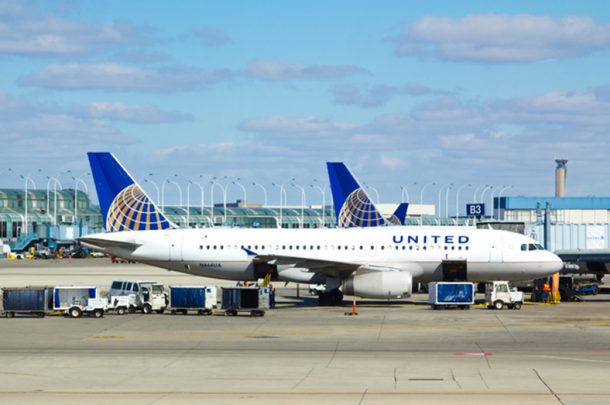
 Primera LEEDs the Way at the CDA
Primera LEEDs the Way at the CDA 
